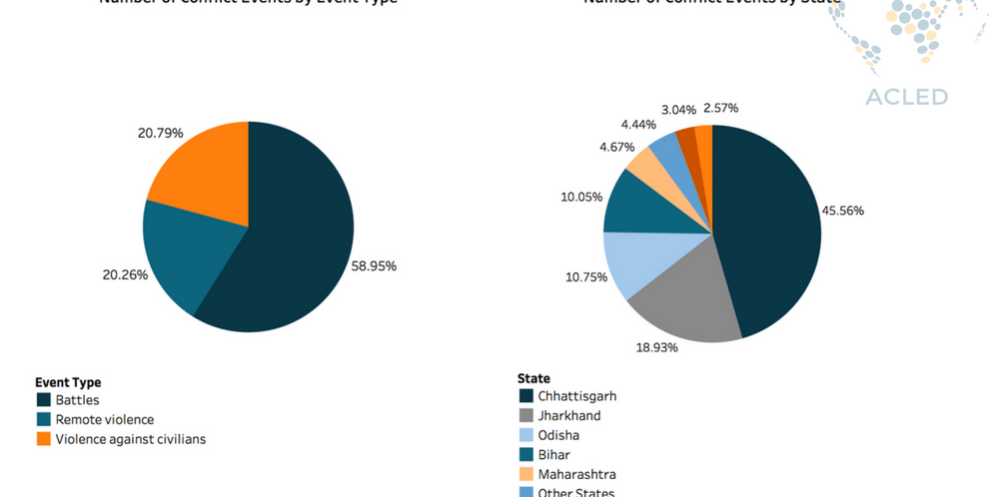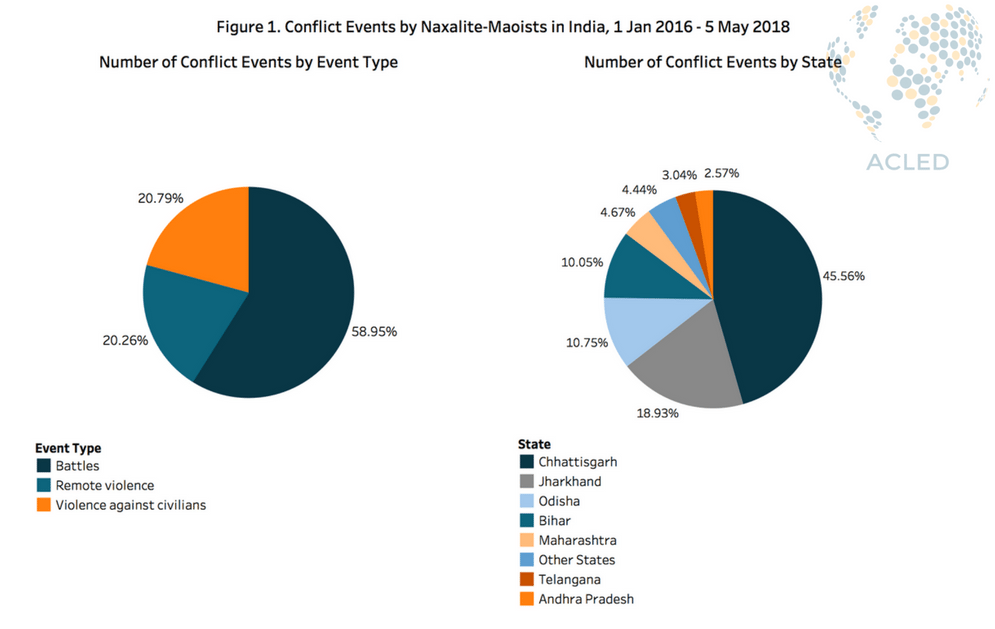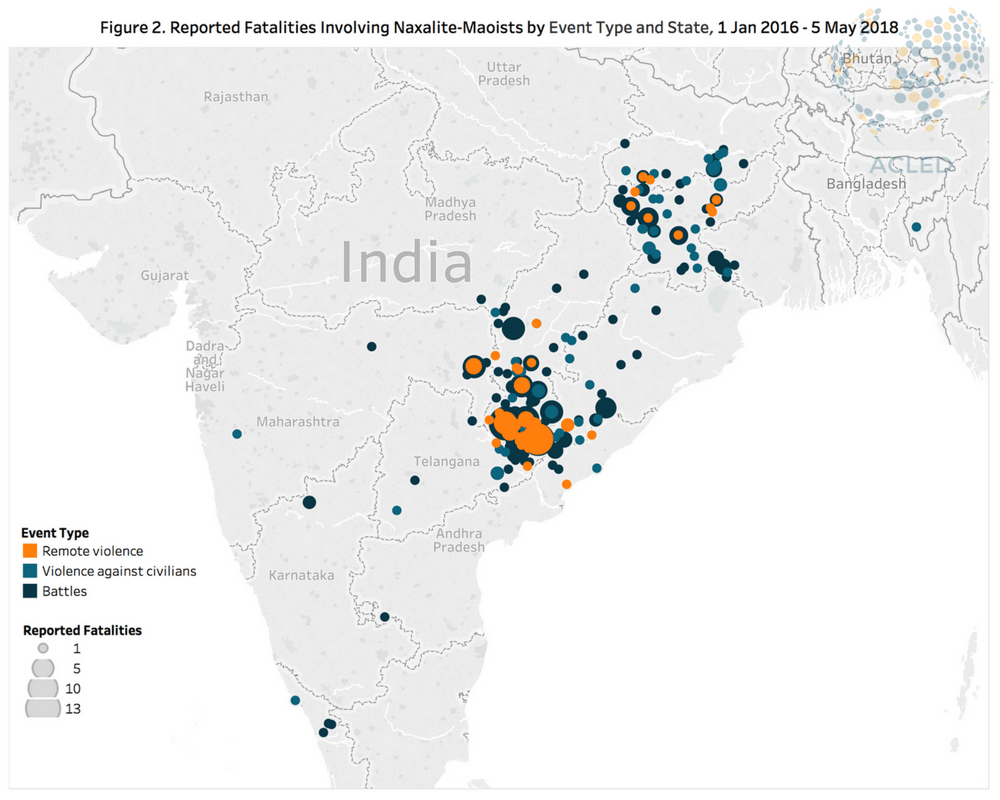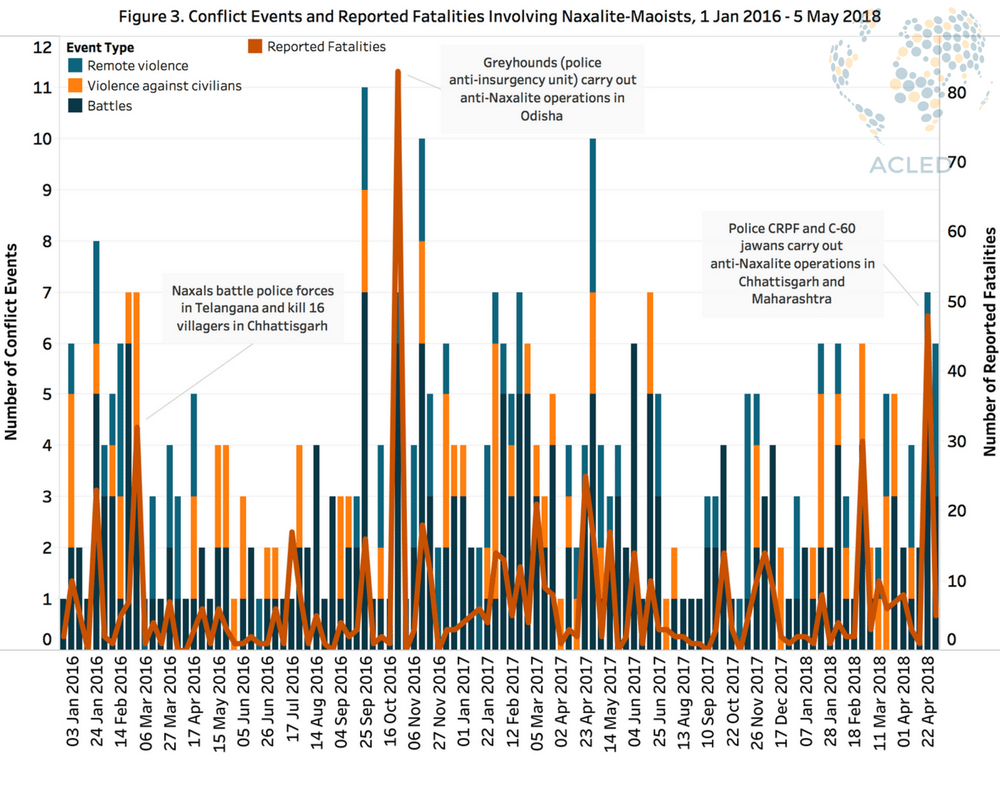Violent conflict involving Naxalite-Maoist rebels in India’s Red Corridor has contributed to a recent increase in political violence in India. Maoist rebels have been engaged in a war against the Government of India since 2004. The insurgency is led by the Communist Party of India (Maoist) whose aim is to overthrow the Indian government and to promote communism in the country (Shapiro et al., 2017).
The ongoing conflict spans over a vast territory – the so-called Red Corridor – in eastern, central, and southern India. Looking at the data from January 2016 to the beginning of May 2018, almost half of the reported conflict events involving Maoist rebels took place in the state of Chhattisgarh, followed by Jharkhand, Odisha and Bihar (see Figure 1). These four states have been traditional strongholds for the Communist Party of India (Maoist).
Over half of the reported conflict events are battles, about one-fifth are violence against civilians, and another fifth are remote violence. Battles typically take place between the Maoist rebels and Indian police forces (see Figure 1). Acts of violence against civilians include killings of alleged police informers, violent attacks on members of opposing political parties, and abductions. For events involving remote violence, Maoist rebels often employ improvised explosive devices (IEDs) as a tool to inflict damage against police forces and damage public infrastructure. “Remote violence is employed by groups who lack the will or ability to take over territory but who seek to dictate government policy and public behaviour through fear; in contrast, stronger rebels who have the means to challenge the state’s sovereignty over its territory may use conventional weapons that are suited to direct military engagement” (ACLED, 29 Aug 2014).
Figures 1 and 2 show that the majority of the reported fatalities of the Naxalite-Maoists insurgency stems from battles with Indian police forces in Chhattisgarh and Jharkhand. There are significantly more reported fatalities as a result of violence against civilians and remote violence in Chhattisgarh than in Jharkhand. Almost half of the reported fatalities occurred in the state of Chhattisgarh; while Odisha, Jharkhand, and Bihar account for one third of the fatalities.
In March 2016, there was an increase in the reported fatalities resulting from Maoist rebels engaging in acts of violence against civilians in Chhattisgarh. Additionally, there are significant spikes in the number of reported fatalities stemming from violence involving Maoist rebels in October 2016 and April 2018, with government forces launching large-scale anti-Naxalite operations in Odisha as well as in Maharashtra and Chhattisgarh (see Figure 3).
The violent conflict involving Naxalite-Maoist rebels in India’s Red Corridor has been a contributing factor to the recent increase in political violence in India. This conflict is just one of many various, ongoing conflicts in India, which together contribute to the complex and multidimensional nature of political violence in the country. (Some of the current ongoing tensions in India recently explored by ACLED include ongoing violence linked to varying identities in the northeast, Gau Rakshak cow vigilantism, tensions in the Jammu & Kashmir region, and the numerous demonstrations).
AnalysisAsiaCivilians At RiskEthnic MilitiasFocus On MilitiasPolitical StabilityPro-Government MilitiasRemote ViolenceRioting And ProtestsVigilante MilitiasViolence Against Civilians









